- Jessica Thompson
- Assistant Professor
- NGSS Networked Improvement Community
- University of Washington
- Christine Chew
- http://ambitiousscienceteaching.org/us/
- Doctoral Candidate
- NGSS Networked Improvement Community
- University of Washington
- Satprit Kaur
- Science Teacher
- NGSS Networked Improvement Community
- Highline Public Schools
- Allyson Kemp
- ELL Specialist
- NGSS Networked Improvement Community
- Highline Public Schools
- Karin Lohwasser
- https://education.uw.edu/people/loh2o
- Resaerch Associate
- NGSS Networked Improvement Community
- University of Washington
- Jennifer Richards
- Research Associate
- NGSS Networked Improvement Community
- University of Washington
- Soo-Yean Shim
- Doctoral Student
- NGSS Networked Improvement Community
- University of Washington
- Bethany Sjoberg
- Secondary Science Specialist
- NGSS Networked Improvement Community
- Highline Public Schools
- Alison Thomas
- Science Teacher
- NGSS Networked Improvement Community
- Highline Public Schools
- Anna Van Windekens
- Research Assistant
- NGSS Networked Improvement Community
- University of Washington
- Kerry Von Esch
- Assistant Professor, Non-native English Speaker and Bicultural Education
- NGSS Networked Improvement Community
- Seattle University
Public Discussion
Continue the discussion of this presentation on the Multiplex. Go to Multiplex











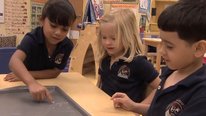
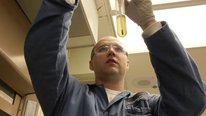
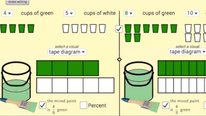

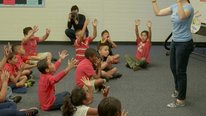
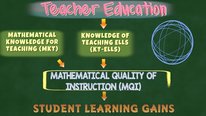
David Todd Campbell
I really appreciate this work and how it provides a vision for supporting learning across schools. Valuable for me to share with districts I am in discussions with related to the value of a network! I also recognize the work of Jessica and her group and appreciate how they are working to capture what they are learning so that they can share it with others!
Susan Kowalski
Your approach to supporting teachers who work with English language learners is exciting. I’m wondering what you are finding in terms of communication within vs. between schools. Are teachers more likely to network with their own colleagues? Can you say a little bit more about your process of supporting the networking?
Bethany Sjoberg
Secondary Science Specialist
Hi Susan, We have several network convenings throughout the school year. During these convenings, the teachers can share their key learnings related to the practices they are working on. We also have done gallery walks of student work and Critical Friends Groups. These convening support communication between schools.
Jessica Thompson
Assistant Professor
The role of the coaches (like Bethany) can’t be overstated. The social networking analysis is proof- teachers rely on their pedagogical expertise and teams rely on them to move tools and practices across schools. EL Coaches working alongside Science Coaches is also critical—they work together to create hybrid EL-science teaching practices that teams of teachers can try on and take up.
David Todd Campbell
In our really early work with districts, we are getting a sense of the influences of policy (e.g., school mandates, decisions, organization structures) on teachers’ implementation of NGSS. This seems to happen when one district hears about a structure (e.g., planning time arrangement) in one school that is supporting collaboration etc. that isn’t happening in another. Are you getting the sense of similar things in your NIC? Are there examples of how districts are learning from the NIC to align policies with objectives for supporting ELLs and/or implementing NGSS?
Jennifer Richards
Research Associate
Hi Todd — one of the most exciting things for me in joining the project has been seeing how structures that developed in certain places in the district have been formalized and taken up more broadly. For instance, Studio Days launched in 2 schools, and are now a regular part of what the district offers as an option for science PD. This has truly been partnership work over an extended period of time!
Are you working with multiple districts? What are some of the major influences you’ve heard about so far, re: NGSS implementation?
David Todd Campbell
I really appreciate this work and how it provides a vision for supporting learning across schools. Valuable for me to share with districts I am in discussions with related to the value of a network! I also recognize the work of Jessica and her group and appreciate how they are working to capture what they are learning so that they can share it with others!
Victor van den Bergh
Project Manager
Dear Jessica and your team,
Interesting video! It sounds like you are having a lot of success as evidenced by the positive testimonies from teachers, your growing network, and the greater involvement from a wider range of stakeholders at your participating schools. How long has it taken you to get to this point, and what future phases do you envision for the project, if any? Thank you for sharing your work!
Jessica Thompson
Assistant Professor
Hi Victor,
We have been partnering with teachers in HPS for 10 years. In the first 5 years we worked with teachers to specify ambitious and equitable teaching practices. Five years ago we began developing a job-embedded PD model with Studio days and three years ago we expanded from 2 schools to 8 then 15 schools. In terms of next steps we have much to learn about how teacher leaders and principals can support the work and about how we develop standard workflow processes to support the use of practical measures—and how teams can use this data for improvement. We are pivoting from working primarily with 1 school district to working across districts with 46 teacher leaders from across the state next year. This will give us a chance to see how practices travel and how NICs can continue to adapt practices to best meet the needs of their students.
David Todd Campbell
Hi Jennifer-thanks for the follow up. I sensed that the studio days were a rallying mechanism/high leverage practice (?) for the network because of their value and how tangible they might be for fostering changes in teaching and learning. I also appreciate how it seems that once one school/district sees what is possible, they can work to envision how such a beneficial practice/structure can be put in place for the benefit of more teachers.
We just help a forum with seven CT districts to think around the challenges and possibilities of NGSS and how a NIC might support the heavy lifting of supporting teachers in enacting NGSS, since CT adopted last year. The biggest challenge for districts seems to be lack of resources and support in NGSS implementation. I think something like the studio days could provide one mechanism for supporting this complex work. Thanks for sharing the work on your important project! Hope al is well.
Todd
Jennifer Richards
Research Associate
7 districts! That sounds like an exciting and challenging context. Keep us posted on how everything continues to develop!
David Todd Campbell
Will do … and will keep looking your way for ideas and resources for this complex work.
Karen Purcell
Project Director
It is really exciting to see the use of a Networked Improvement Community in a school setting to support language learners in science. There is such potential for growth and support. What are some of the challenges you’ve experienced? I wonder, for instance how easy it has been to get active participation. Also has it been a challenge to get teachers to open up about their struggles?
Jessica Thompson
Assistant Professor
Thanks for your question. We have almost 100% buy-in from all teachers. We support teams (of teachers, coaches and researchers) in naming teaching practices and then investigating them—so we position the work and ourselves (as researchers) as an opportunity to work on problems that are difficult to gain traction on alone.
There are challenges at every step of the way, for example, finding the right way to involve principals, designing ways for students to give input (not just be objects of study), meaningfully working on hybrid science-EL practices, and supporting teams of teachers who do not have a history of working together…to name a few…
David Todd Campbell
I really appreciate this work and how it provides a vision for supporting learning across schools. Valuable for me to share with districts I am in discussions with related to the value of a network! I also recognize the work of Jessica and her group and appreciate how they are working to capture what they are learning so that they can share it with others!
Joseph Wilson
Managing Director
#teamJessica – I appreciate the community that this sets up and the knowledge sharing across schools for implementation of (rigorous) NGSS for all students, including English Language Learners. I was hoping you could talk a bit more about your engagement with school administrators in these communities? Congratulations on the success so far with this project (and video) — looking forward to learning more!
Christine Chew
Doctoral Candidate
Thanks, Joseph. School administrators (at the district level and in the buildings) have been very supportive of this work since the beginning. Some have occasionally attended parts of teachers’ job-embedded professional development days. This year, we’ve begun to help principals and assistant principals make more connections between their broader work for their schools and the instructional framework that gives context to the science teacher learning. We conducted a series of science learning walks in classrooms in their buildings with the principals to look for different aspects of science practices, share reactions, and review how our professional learning would build on what we saw in the classrooms. Principals expressed enthusiasm for finding ways to better align their own conversations with teachers to the professional learning those teachers were focused on. They also expressed an interest in tying their school-wide initiatives (e.g., standards based instruction/assessment) more closely with their science teachers’ learning. Our new work to support development of teacher leadership around ambitious science teaching practices in these schools will to help continue these conversations as well.
Further posting is closed as the showcase has ended.